Kia Sportage: Transaxle Oil Temperature Sensor
Description and Operation
Description
Transaxle oil temperature sensor monitors the automatic transaxle fluid's temperature and conveys the readings to TCM. It is an NTC (Negative Thermal Coefficient) sensor whose resistance has an inversely proportional relationship with the temperature level. Data produced by this sensor is used to identify damper clutch activation and deactivation zones within the low temperature and high temperature range and to compensate hydraulic pressure levels during gear changes.
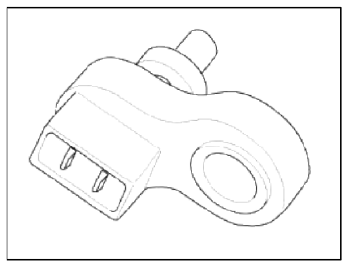
Specifications
Specifications
Type: Negative Thermal Coefficient Type
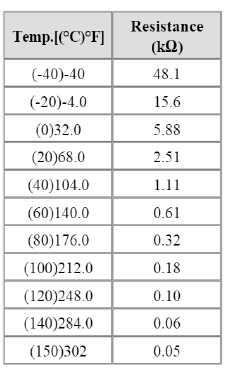
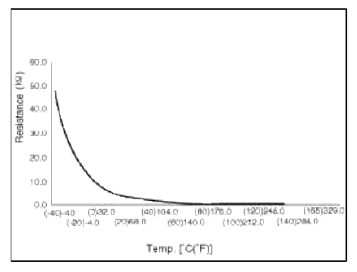
Schematic Diagrams
Circuit Diagram
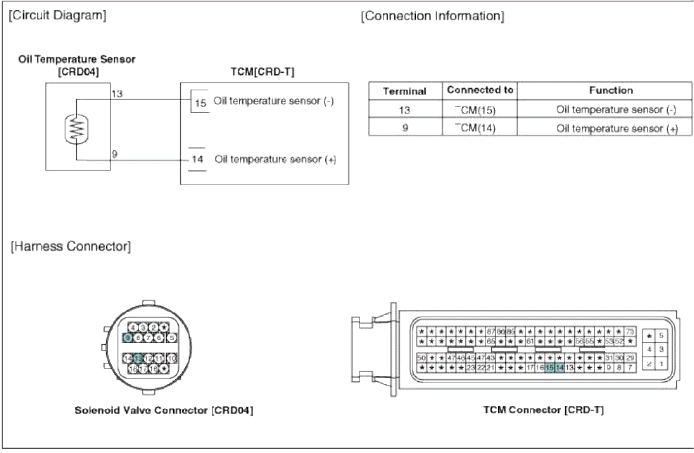
Repair procedures
Inspection
1. Turn ignition switch OFF.
2. Disconnect the oil temperature sensor connector.
3. Measure resistance between sensor signal terminal and sensor ground terminal.
4. Check that the resistance is within the specification
Removal
1. Remove the battery and the battery tray. (Refer to "Charging system" in EE group.)
2. Remove the under cover (A).
Tightening torque: 19.6 ~ 24.5 N.m (2.0 ~ 2.5 kgf.m, 14.5 ~ 18.1 lb-ft)
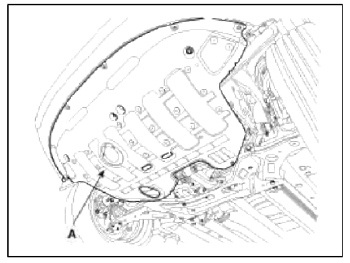
3. Replace new gasket and the ping after draining the automatic transaxle fluid by removing the drain ping. (Refer to "Hydraulic system (Fluid)" in this group)
4. Remove the valve body cover (A) and eyebolt (B).
Tightening torque:
(A) 13.8 ~ 14.7 N.m (1.3 ~ 1.5 kgf.m, 9.4 ~ 10.8 lb-ft)
(B) 34.3 ~ 44.1 N.m (3.5 ~ 4.5 kgf.m, 25.3 ~ 32.6 lb-ft
CAUTION
Always replace the gasket of the eyebolt use new one whenever loosening eyebolt.
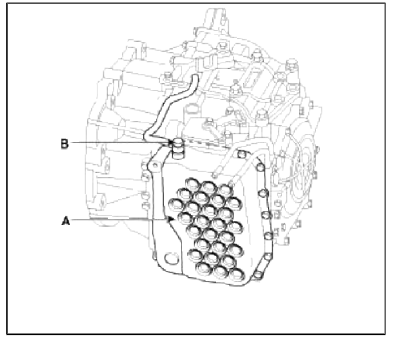
5. Disconnect the oil temperature sensor connector (A).
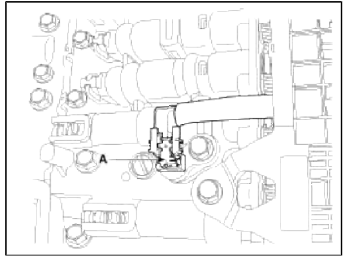
6. Remove the oil temperature sensor (A) after removing a bolt.
Tightening torque: 9.8 ~ 11.8 N.m (1.0 ~ 1.2 kgf.m, 7.2 ~ 8.7 lb-ft)
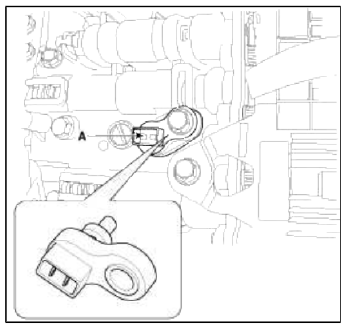
Installation
1. Installation is the reverse of removal.
NOTE
After replacement or reinstallation procedure of the valve body assembly, must perform procedures below.
- Continue to apply liquid gasket at application points at the valve body cover with Ø2.5mm (0.0984in.) thickness.
Liquid gasket Part name : Threebond 1281B or LOCTITE FMD-546
- Adding automatic transaxle fluid. (Refer to "Hydraulic system (Fluid)" in this group)
READ NEXT:
 Input Speed Sensor
Input Speed Sensor
Description and Operation
Description
Input speed sensor is a vital unit that measures the rate of rotation of the
input shaft inside the transaxle and delivers
the readings to the TCM. The
 Output Speed Sensor
Output Speed Sensor
Description and Operation
Description
The output speed sensor is a vital unit that measures the rate of rotation of
the transaxle's turbine shaft and output
shaft, and delivers the read
 Torque Converter Control Solenoid Valve (T/CON_VFS) | 26 Brake Control Solenoid Valve (26/B_VFS)
Torque Converter Control Solenoid Valve (T/CON_VFS) | 26 Brake Control Solenoid Valve (26/B_VFS)
Description and Operation
Description
Torque converter control solenoid valve (T/CON_VFS) is attached to the valve body. This variable force solenoid valve directly controls the hydraulic pre
SEE MORE:
 Master Cylinder
Master Cylinder
Components and Components Location
Components
Reservoir cap
Reservoir'
Grommet
Master
cylinder
Repair procedures
Removal
1. Turn ignition switch OFF and disconnect the negative (-) battery cable.
2. Disconnect the battery terminal and then remove the battery.
3.
 Water pump
Water pump
Components and Components Location
Components
Water pump pulley
Water pump sub assembly
Water pump gasket
Water pump cover
Water pump cover gasket
O-ring
Water inlet pipe
Water temperature control assembly
Water inlet fitting
Engine coolant temperature sensor
Thermos
Content
- Home
- Kia Sportage - Fifth generation (NQ5) - (2022-2025) - Owner's Manual
- Kia Sportage - Second generation (JEKM) (2005-2015) - Body Workshop Manual
- Kia Sportage Third generation (SL) - (2011-2016) - Service and Repair Manual
- Sitemap
- Top articles